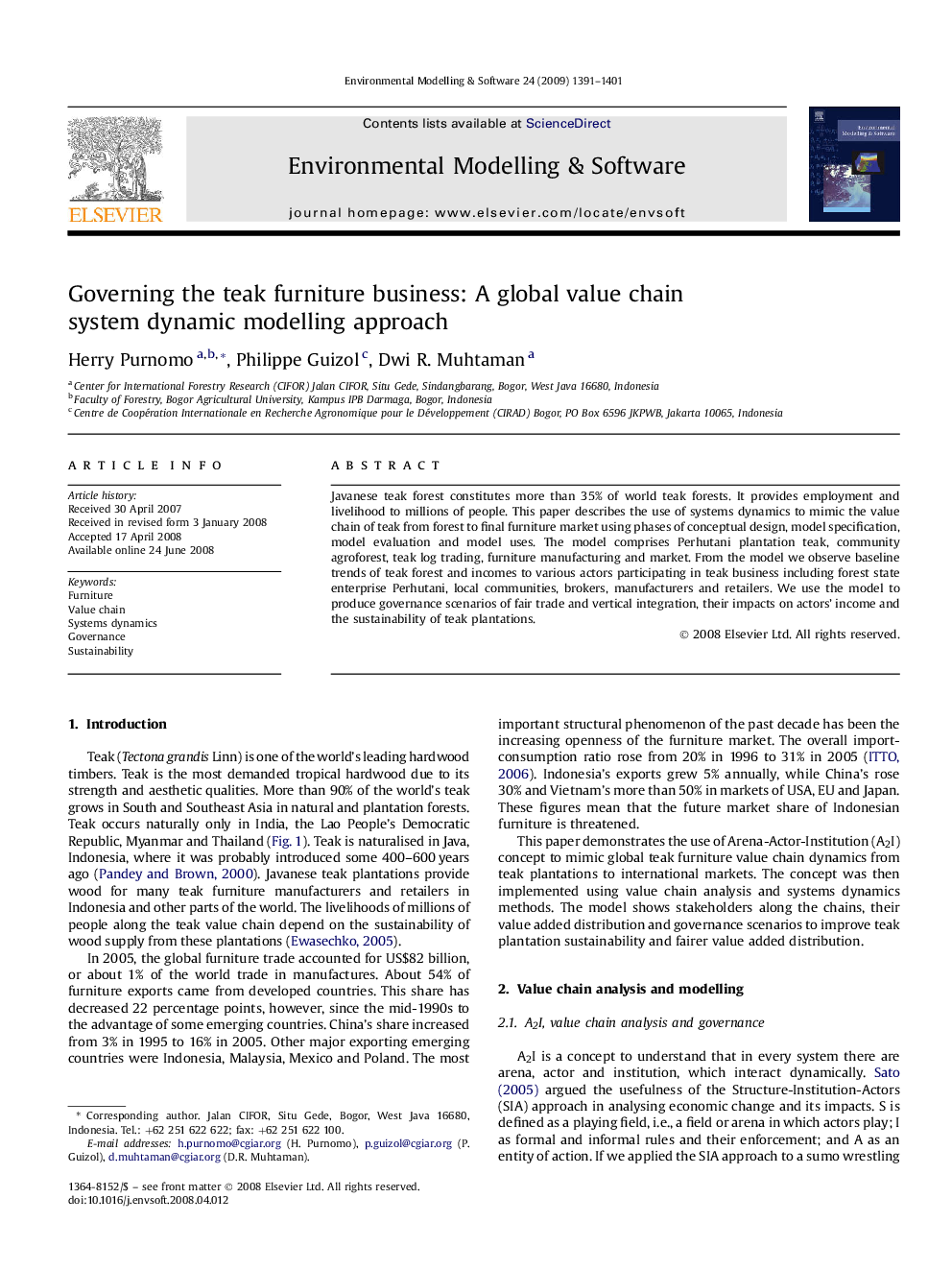| Article ID | Journal | Published Year | Pages | File Type |
|---|---|---|---|---|
| 570301 | Environmental Modelling & Software | 2009 | 11 Pages |
Javanese teak forest constitutes more than 35% of world teak forests. It provides employment and livelihood to millions of people. This paper describes the use of systems dynamics to mimic the value chain of teak from forest to final furniture market using phases of conceptual design, model specification, model evaluation and model uses. The model comprises Perhutani plantation teak, community agroforest, teak log trading, furniture manufacturing and market. From the model we observe baseline trends of teak forest and incomes to various actors participating in teak business including forest state enterprise Perhutani, local communities, brokers, manufacturers and retailers. We use the model to produce governance scenarios of fair trade and vertical integration, their impacts on actors' income and the sustainability of teak plantations.
